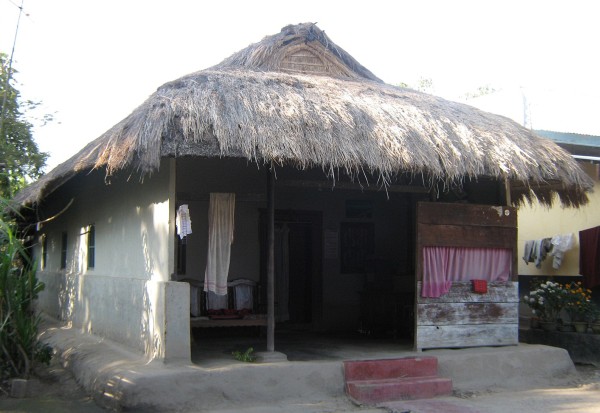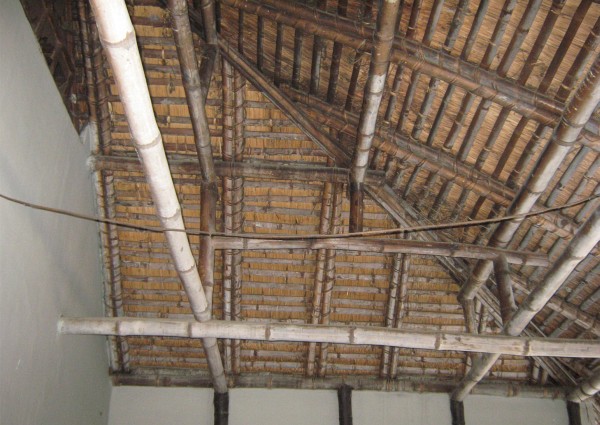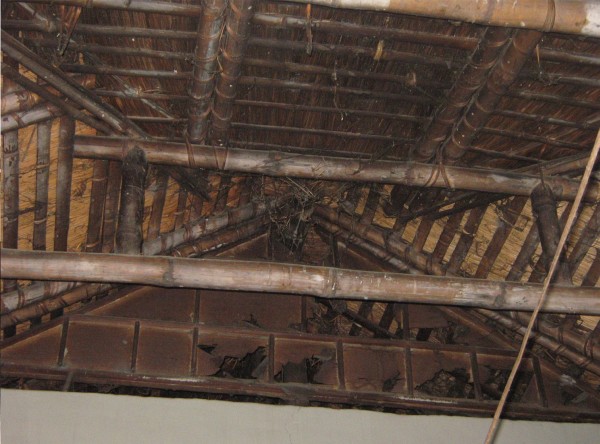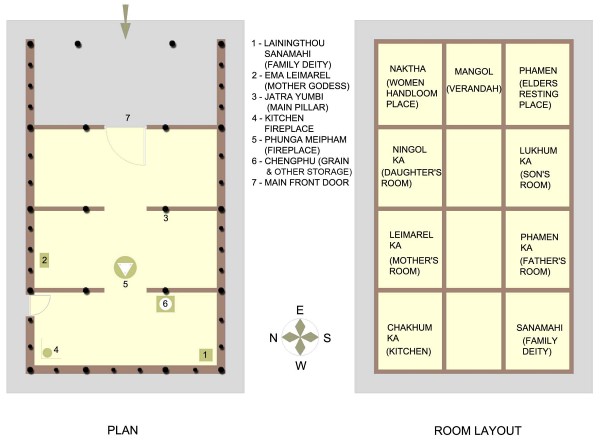.jpg) |
| A self-portrait of Lee Yong-nyeo is placed at her memorial alter arranged in Pocheon, Gyeonggi Province, on Aug. 12. / Yonhap |
This is the first part of the life story of the late Lee Yong-nyeo, a former war-time sex slave, as told to Koh Hye-jung in an interview for the book Testimonials of Korean Comfort Women. The words were translated from Korean to English by Maija Rhee Devine, author of "The Voices of Heaven," a novel published this year by Seoul Selection. Lee passed away on Aug. 11. This is an edited version of Devine's translation. The second and final part of Lee's story will be published next week. — ED.
| Biographical information : Born in 1926 in Yeoju, Gyeonggi Province to a poor family, Lee Yong-nyeo was hired out as a domestic worker when she was eight. At eleven, she moved to Seoul, where she worked in factories or as a domestic until she turned fourteen. Then she was “sold” to a woman running a wine house, where she ran errands and waited on customers. In 1942, when she turned 16, the owner persuaded her to move to a new work place without revealing where the new job would take her. As it turned out, via Busan, Taiwan, and Singapore, she landed in a mountainous region of Burma. In that rugged terrain, her life as a comfort woman began. |
.jpg) |
| The late Lee Yong-nyeo (1926-2013) |
.jpg) |
| Lee’s words were translated by Maija Rhee Devine |
Born the second of five children on Feb. 19, 1926, at Buknaemyeon, Yeoju, Gyeonggi Province, I had a brother who was five years older than me, but among girls, I was the oldest. Originally, our family lived in Yangpyeong where we owned some land, but my father gambled it away and left us too destitute to send me to school.
The house where I was hired out as an eight-year-old belonged to a well-to-do family in Yeoju. I remember washing floor-mopping rags at that house. As we had no land to farm in Yeoju, we subsisted on the rice we bought on credit. Soon, unable to pay the debt, we packed up and went to Seoul, where my father’s sister lived. At first, we crammed into one of the rooms at her house, but after a while, both my older brother and I were hired out.
I worked at the home of Mr. Im, who ran a textile business. Every day, I carried the family’s baby on my back all day, and often the baby wet the clothes on my back, leaving me with heat rash in the summer. In the winter, I washed diapers in freezing water, which caused my skin to dry out, crack, and bleed.
After migrating from one rental to another, our family built a tent shanty behind what is now the Ahyeon Elementary School in Seoul. While we were on the verge of starving, my mother gave birth to a child who was tiny because of her hunger during pregnancy. Grandmother said to me, “Even if you have to beg, you’ve got to find food for your mommy. She can lose her mind if she doesn’t have food in her stomach.” So, I took a sack and a basket and begged door to door and kept my mother and the baby alive for the next six months.
In rich neighborhoods like Sajik-dong, the ladies of the houses asked me to work for them. But I had to answer, “My mother and her baby are starving, and I must find food and cook for them. So, I can’t work for you.” Sometimes, they gave me food, sometimes, money. At that time, a bag of sugar cost 5 “jeon.” I fed the baby with a little sugar added to porridge.
Sometimes we bought the dregs left from making rice wine and boiled that to make meals. I also stopped at a potato noodle factory, where I collected the noodles that fell out of the cooking pots and lay soggy in the dirt. I brought that home, where I washed, cooked and seasoned the noodles for our meals.
For a while, my father sold vegetables in the market. Naturally, we ate a lot of that, but we got sick with parasites. When my face turned brown, and I was near death, my father told me that if I worked for a Japanese family and ate good food, I would be cured. So, I went and worked for a Japanese family.
After I got better, I returned home and continued to feed the family by begging. I also carried water up the hill to our shanty every day. My father made me do all the work. He said, “Carry some water. Go get some sugar. Make some porridge for the baby.”
At 14, I went to work at a cookie factory located near the crematory in Hongje-dong. About a year later, my father sent my younger brother to fetch me home. When I arrived, I found a plump woman wearing gold jewelry and a Korean style overcoat. She said if I’d go with her, I could do well not only for myself but also provide for my parents. My mother kept her back turned toward her, saying nothing, but my father urged me to go. So, I followed her. Later, I heard my father received a sum of money from that woman, which he said he planned to pay back in installments over the next year.
The story behind this deal had to do with the housing dilemma we faced. Those of us living in tent shanties in Ahyeon-dong had been forced to pack up our tents and move further up the Hongeun-dong hill. At that time, Hongeun-dong hill was barren except for graves. We were told to dig up dead bodies, burn them, and build our homes. So, we tore up our tent home in Ahyeon-dong and moved it up the hill. However, we needed more lumber, which we obtained on credit. But when we couldn’t pay the debt, we were forced to either turn our house over or pay what we owed on the lumber. This was the reason my father made a deal with the woman to give him a sum of money in exchange for my employment with her.
Deceived by the owner
The woman took me to a large wine house called Youngchunok, which stood by the jail near Seodaemun. I set tables for customers and ran small errands. After a year of working there, the woman asked me if I’d like to get a good job in Japan that paid a lot of money. Since there would be many other girls also going there to work, she said I didn’t need to be afraid. I had no idea how to get there, but the hunger for a job that would provide me with good food, clothing, and money was too powerful for me to resist such a heaven-sent opportunity. She gave me a packet of Chinese medicine to take home, brew and drink and told me to wait for word from her. The medicine, she said, would cut the seasickness in the boat to Japan. She gave me some pocket money, too. How much, I can’t remember. I do remember buying an outfit each for my little sister and younger brother.
Back at home in Hongeun-dong, I rested for about two weeks. During that time, I told my friends, “I’ve been promised a good job.” Hearing this, two of my former co-workers at a cookie factory, Kim Duk-sool, two years older than me, and Kim Hok-geun, a year older than me, decided to join me.
Soon, I received a word to come to a meeting place. It was 1942. I had just turned sixteen. I wore the white short-sleeved dress I got at the Youngchunok and wore a pair of white high heels. When I arrived at a Chinese restaurant in Myeong-dong below the Mt. Nam, there were several dozen young women already waiting. After accompanying Duk-sool, Hok-geun and me there, my father left. For lunch there, we ate sweet-and-sour pork, fried rice, and so forth. For the first time, I had a dish with sea cucumbers. After lunch, we boarded a train to Busan.
Arriving there at night, I couldn’t tell what was what. We stayed at an inn located at the Hot Springs of Dongrae for seven or 10 days. The day after we arrived there, when I asked if I could walk to the ocean, I was told the road in front of the inn would take me straight there. But I was also told to stay in. We were being led by a Korean man and several women. In the evening, we took baths in the hot spring and feasted on good food, but we were never allowed to venture outside.
When we boarded a huge ship — possibly a transport or military — in Busan, several of the Korean escorts disappeared. About sundown, pointing at a land across the waters, someone said it was Japan. There were hundreds of women in the ship, and from the Japanese soldiers, I learned we’d work as comfort women. I didn’t know what that meant, although I knew some Japanese because I once worked for a Japanese family.
Despite having been told we were heading to Japan, we bypassed it and headed south. I suffered seasickness so badly that I couldn’t eat and stayed stretched out. Soon, we anchored in Taiwan, but we were not allowed to leave the ship. I remember lowering my hat to the sellers on the dock and buying fruit that way.
When we sailed again, the ship stopped briefly in the middle of the ocean, where the sun rose right out of the water and later dropped into it. We were all seasick and lay down, and whenever we hit big waves, we groaned in unison. Finally, we stopped and anchored. This time, it was Singapore, but again we were confined to the ship.
Source: The Korea Times





 Lee Bo-yong (left) and Ji Sung
Lee Bo-yong (left) and Ji Sung  Lee Bo-young (left) and Ji Sung
Lee Bo-young (left) and Ji Sung .jpg)
.jpg)
.jpg)




 People queue at the check-in at Incheon International Airport on Sept. 17, 2010
ahead of the Chuseok holidays.
People queue at the check-in at Incheon International Airport on Sept. 17, 2010
ahead of the Chuseok holidays. 
 The floor of the Baekrokdam crater on Mt. Halla is exposed on Aug. 3, 2013 amid
severe drought on Jeju Island. /Newsis
The floor of the Baekrokdam crater on Mt. Halla is exposed on Aug. 3, 2013 amid
severe drought on Jeju Island. /Newsis 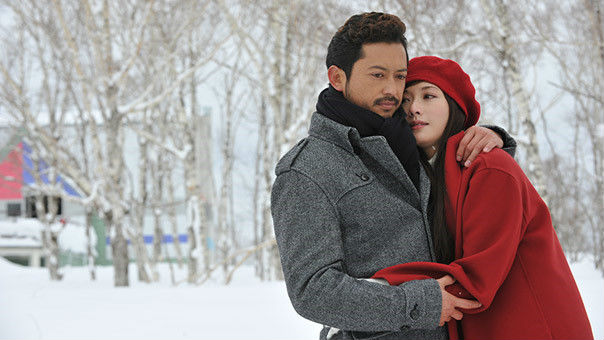

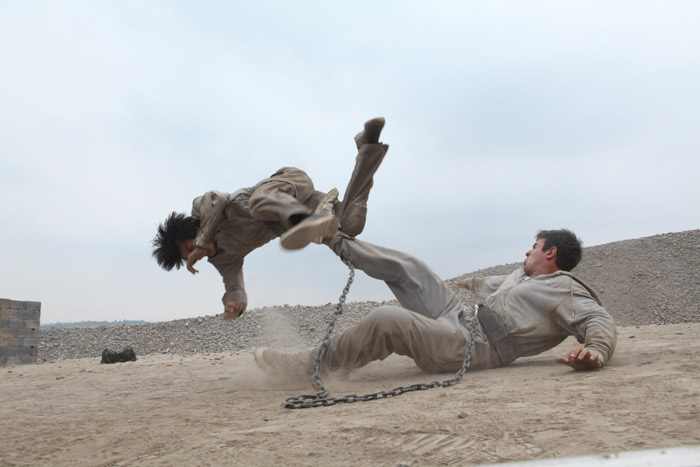



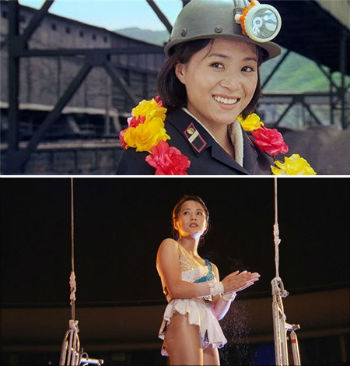


 An image circulating online purports to show Samsung's Galaxy Gear smartwatch.
An image circulating online purports to show Samsung's Galaxy Gear smartwatch.

.jpg)
.jpg)
.jpg)
.jpg)
 Actress Lee Young-ae (right) takes a tour of the frontline with provincial
officials and soldiers in Yeoncheon, Gyeonggi Province on Tuesday. /Courtesy of
Gyeonggi Provincial Government
Actress Lee Young-ae (right) takes a tour of the frontline with provincial
officials and soldiers in Yeoncheon, Gyeonggi Province on Tuesday. /Courtesy of
Gyeonggi Provincial Government 

 /Courtesy of BH Entertainment
/Courtesy of BH Entertainment 

 North Korean leader Kim Jong-un visits the construction site of the Mirim Riding
Club in this undated photo released by the state-run KCNA news agency in
Pyongyang on Saturday. /Reuters-News 1
North Korean leader Kim Jong-un visits the construction site of the Mirim Riding
Club in this undated photo released by the state-run KCNA news agency in
Pyongyang on Saturday. /Reuters-News 1 
 LG Electronics president of mobile communications Park Jong-seok presents the
new G2 smartphone at a press event in New York on Wednesday. /News 1
LG Electronics president of mobile communications Park Jong-seok presents the
new G2 smartphone at a press event in New York on Wednesday. /News 1  A North Korean woman waits to cross a road in Pyongyang on July 26, 2013.
/Reuters-News 1
A North Korean woman waits to cross a road in Pyongyang on July 26, 2013.
/Reuters-News 1 